An important part of physics research is examining why theoretical calculations and experimental results sometimes don’t match. A recent physics experiment on the helium-4 nucleus and how it transitions from its basic energy state to its first excited state found evidence of a disagreement between theory and experiment. Now new calculations of the observed transition found agreement with the recent experimental results.
Tag: Nuclear Physics
Chasing and Counting Mesons
Karthik Suresh’s doctoral dissertation on meson decay in the ongoing GlueX Collaboration at Jefferson Lab has just earned the prestigious 2023 Jefferson Science Associates (JSA) Thesis Prize.
Pooling Skills to Study a Slippery Particle
A combination of supercomputing and traditional techniques has allowed Jefferson Lab theorists to better describe the unstable sigma meson particle, contributing to our comprehension of the strong interaction.
Oxygen Tweaking May be Key to Accelerator Optimization
Researchers at the U.S. Department of Energy’s Thomas Jefferson National Accelerator Facility are exploring how adding oxygen to the surfaces of particle accelerator cavities, one of the most critical parts of an accelerator, can help scientists custom-tailor their properties for maximum efficiency and minimum cost.
Ab Initio Methods Help Scientists Make Sense of Complex Particle Collisions
New research finds that ab initio methods using effective field theory can be used to study the scattering of protons and neutrons off atomic nuclei. The research specifically examined the scattering of protons from carbon-12 and oxygen-16 at low energies.
U.S. Department of Energy Issues Request for Proposals for Contractor to Manage and Operate Thomas Jefferson National Accelerator Facility
Today, the U.S. Department of Energy (DOE) announced the issuance of a Request for Proposals (RFPs) for the competitive selection of a management and operating contractor for the Thomas Jefferson National Accelerator Facility (TJNAF).
Three Argonne postdocs invited to prestigious meeting of Nobel laureates
Three Argonne postdoc scientists have been invited to the prestigious Nobel Laureate Meetings in Lindau, Germany, where they will meet with past Nobel Prize winners in their fields.
Celebrating the legacy of Maria Goeppert Mayer
Maria Goeppert Mayer left an indelible mark on science through her groundbreaking contributions to nuclear physics. A Nuclear Structure Conference at Argonne will highlight her contributions to physics theory.
Lijuan Ruan: Then and Now / 2013 Early Career Award Winner
Lijuan Ruan is a senior physicist at Brookhaven National Lab who studies the strong force interactions in the quark-gluon plasma created at RHIC.
MOLLER Experiment Baselined and Moving Forward
The MOLLER experiment has received Critical Decision 2 “Approve Performance Baseline” and Critical Decision 3 “Approve Start of Construction” from the Department of Energy, which provides clearance to move forward with all procurements and equipment construction.
New Insights on the Role of Nucleon Exchange in Nuclear Fusion
The way protons and neutrons move between two nuclei is key to understanding the processes in low-energy nuclear fusion reactions. As the nuclei draw close enough for the nuclear forces to become effective, neutrons and protons can migrate from one nucleus to another, potentially easing the fusion process.
Precision Measurements of Radioactive Molecules for Fundamental Physics
For the first time, nuclear physicists made precision measurements of the short-lived radioactive molecule, radium monofluoride (RaF). The researchers combined ion-trapping and specialized laser systems to measure the fine details of the quantum structure of RaF. This allowed them to study the rotational energy levels of RaF and determine its laser-cooling scheme.
Promethium bound: Rare earth element’s secrets exposed
Scientists have uncovered the properties of a rare earth element that was first discovered 80 years ago at the very same laboratory, opening a new pathway for the exploration of elements critical in modern technology, from medicine to space travel.
Oppenheimer Fellows to Gain Broader View of National Labs
Two physicists at Jefferson Lab have been selected as fellows for the distinguished Oppenheimer Science and Energy Leadership Program (OSELP), considered the highest honor for leadership training among national labs.
New Method Could Explore Gluon Saturation at the Future Electron-Ion Collider
Exploring the gluon saturation in large nuclei is one of the major goals of the future Electron-Ion Collider. New research proposes a novel method to probe the onset of gluon saturation by measuring the nucleon energy-energy correlation in deep inelastic scattering. This result leads to a comprehensive approach to study the universal behavior of gluon saturation.

Theory Thesis Wins APS Dissertation Award
Zhite Yu has been awarded the 2024 J.J. and Noriko Sakurai Dissertation Award in Theoretical Particle Physics. The award was presented to Yu at the APS April Meeting in Sacramento, where he also delivered a talk about his work.
Database Supplies Recommended Key Properties for All Known Nuclei
Scientists know of more than 3,300 isotopes. Researchers have compiled experimental nuclear data for all known nuclei, including mass, quantum numbers, half-life, decay modes, and branching intensities.
Relativistic Heavy Ion Collider Begins Run 24
Today marks the startup of the 24th run of the Relativistic Heavy Ion Collider (RHIC), a U.S. Department of Energy (DOE) Office of Science user facility for nuclear physics research at DOE’s Brookhaven National Laboratory.
João Barata Awarded CERN Fellowship
João Barata, a physicist in the Nuclear Theory Group at the U.S. Department of Energy’s (DOE) Brookhaven National Laboratory, has received a fellowship at CERN, the European Organization for Nuclear Research. In October 2024, Barata will begin the three-year-long appointment in CERN’s Department of Theoretical Physics.
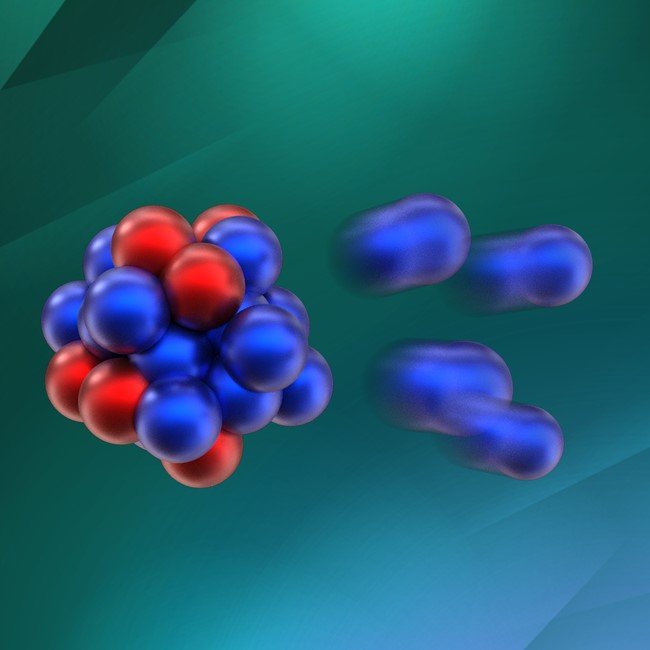
Not-Quite “Magic” Oxygen-28 Observed for the First Time
According to the traditional model of nuclear shells, oxygen-28 is expected to be a doubly magic nucleus with 20 neutrons and 8 protons. However, an experiment performed at the Rare Isotope Beam Facility in Japan measured the direct decay of oxygen-28 into four neutrons and oxygen-24 and found that it is not a bound nucleus.
Teasing Strange Matter from Ordinary
Like protons and neutrons, Lambda particles consist of three quarks bound together by gluons. But unlike protons and neutrons, which contain a mixture of up and down quarks, Lambdas also contain a strange quark.
New nuclei can help shape our understanding of fundamental science on Earth and in the cosmos
In creating five new isotopes, an international research team working at the Facility for Rare Isotope Beams, or FRIB, at Michigan State University has brought the stars closer to Earth.
Gluon Spins Align with the Proton They’re In
Scientists have new evidence that gluons have a positive spin polarization, meaning the spins of individual gluons are aligned in the same direction as the spin of the proton they are in.
Argonne National Laboratory set to play pivotal role in realizing U.S. goals for nuclear science research
The Nuclear Science Advisory Committee recently unveiled its 2023 Long Range Plan for nuclear science. Argonne National Laboratory, with its world-class nuclear physics facilities and expertise, is poised to play a pivotal role in realizing the plan.
Jefferson Lab Welcomes Next Generation of Nuclear Physicists
The U.S. Department of Energy’s Thomas Jefferson National Accelerator Facility is proud to announce nine new graduate fellowships for the 2023-2024 academic year, thanks to ongoing funding from Jefferson Science Associates. These fellowships offer students a unique opportunity to collaborate with leading nuclear physicists at Jefferson Lab and pursue advanced studies at their respective universities.
Argonne and industry collaborate to shape nuclear’s future
Seven private companies demonstrate the impact of partnering with the U.S. Department of Energy and its national laboratories to advance nuclear reactor designs, fight climate change and provide secure energy to the nation.
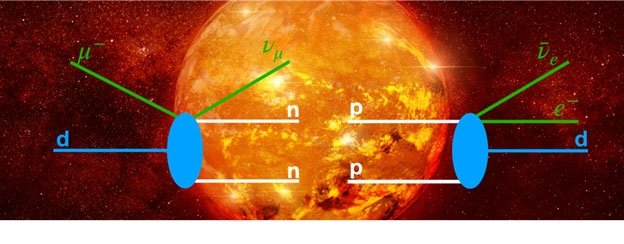
Exploring Stellar Hydrogen Burning via Muons and Nuclei
When a muon binds with a deuteron, it forms a system with two neutrons in a process analogous to proton-proton fusion. Nuclear theorists examined this muon capture process to quantify theoretical uncertainty relevant for comparison with experimental data and to test predictions involving proton-proton fusion. The study supports ongoing efforts to enhance the accuracy of muon capture measurements and to apply the same theoretical framework to other processes.
Department of Energy Announces up to $500 Million for Basic Research to Advance the Frontiers of Science
The U.S. Department of Energy (DOE) today announced up to $500 million in funding for basic research in support of DOE’s clean energy, economic, and national security goals.
Department of Energy Announces $73 Million for Basic Research to Accelerate the Transition from Discovery to Commercialization
Today, the U.S. Department of Energy (DOE) announced $73 million in funding for eleven projects which focus on the goal of accelerating the transition from discovery to commercialization of new technologies that will form the basis of future industries.
Scientists Make the First Observation of a Nucleus Decaying into Four Particles After Beta Decay
Scientists have observed a rare new radioactive decay mode for the first time. In this decay mode, oxygen-13 (with eight protons and five neutrons) decays by breaking into three helium nuclei (an atom without the surrounding electrons), a proton, and a positron (the antimatter version of an electron) following beta decay. The findings expand scientific knowledge of decay processes and the properties of the nucleus before the decay.
Argonne receives funding to use AI and machine learning for nuclear physics research
Three Argonne projects will receive funding to use AI and machine learning for nuclear physics accelerators and detectors.
Theoretical and Experimental Physics Team Up in the Search for Particle Flavor Change
Scientists recently discovered that neutrinos have mass, counter to long-held understanding. This means that neutrinos can change flavor. Now, advances in theory and experiment are helping scientists to determine whether the neutrinos’ charged counterparts—electrons, muons, and tauons—can also change flavor and how future experiments can look for those changes.
DOE Awards $135 Million For Groundbreaking Research By 93 Early Career Scientists
The U.S. Department of Energy (DOE) today announced the selection of 93 early career scientists from across the country who will receive a combined $135 million in funding for research covering a wide range of topics, from artificial intelligence to astrophysics to fusion energy. The 2023 Early Career Research Program awardees represent 47 universities and 12 DOE National Laboratories across the country. These awards are a part of the DOE’s long-standing efforts to develop the next generation of STEM leaders to solidify America’s role as the driver of science and innovation around the world.
Hi’CT: Revolutionary Pixel Sensor-Based Image Device Enhances Precision in Ion Therapy
The Hi’CT system, a compact segmented full digital tomography detector utilizing silicon pixel sensors, represents a significant breakthrough in heavy-ion radiotherapy.

Designing Detectors for DUNE
PNNL scientists design a highly sensitive neutrino detector for the Deep Underground Neutrino Experiment.
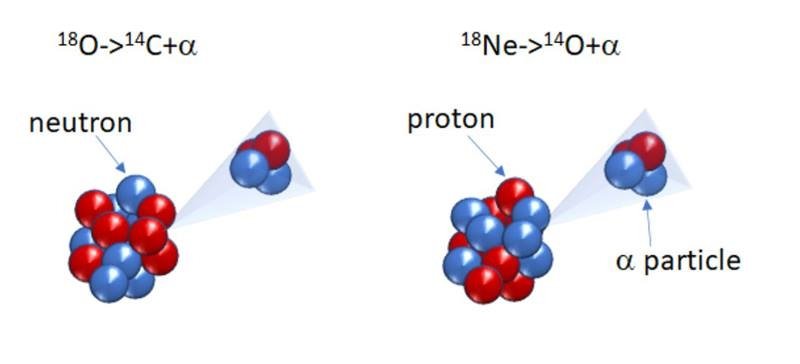
Discovering Evidence of Superradience in the Alpha Decay of Mirror Nuclei
Nuclei can absorb energy, pushing the nuclei into excited states. When these states decay, the nuclei emit different particles. The interplay between these decay channels and the internal characteristics of the excited states gives rise to phenomena such as superradiance. In superradiance, a nucleus with high excitation energy has excited states so dense that neighboring excited states overlap. Scientists recently found evidence of the superradiance effect in the differences between decaying states in Oxygen-18 and Neon-18.
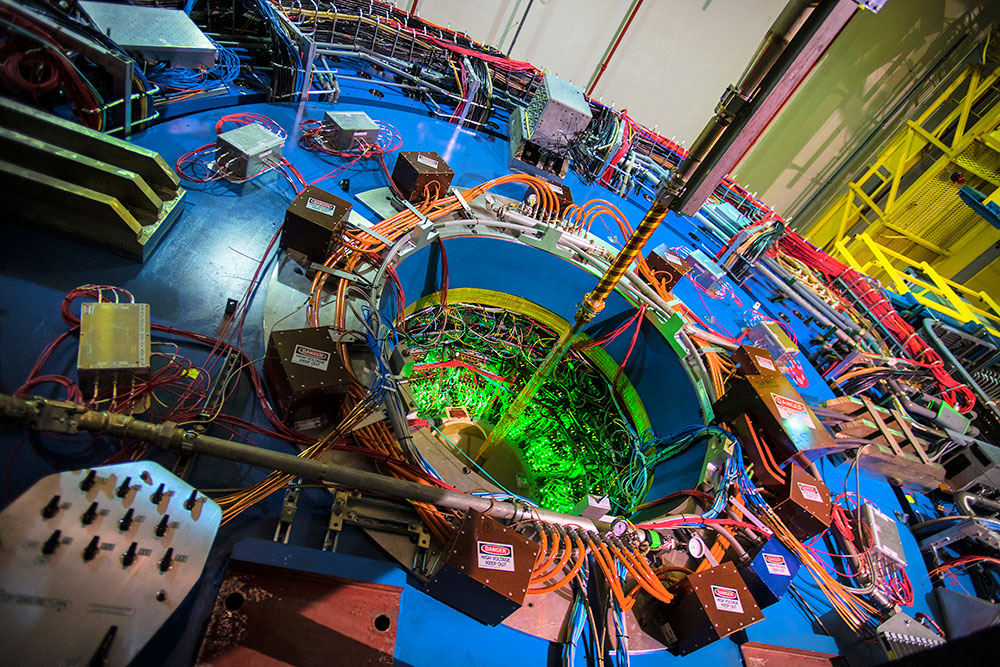
New Driver for Shapes of Small Quark-Gluon Plasma Drops?
New measurements of how particles flow from collisions of different types of particles at the Relativistic Heavy Ion Collider (RHIC) have provided new insights into the origin of the shape of hot specks of matter generated in these collisions. The results may lead to a deeper understanding of the properties and dynamics of this form of matter, known as a quark-gluon plasma (QGP).
Direct Photons Point to Positive Gluon Polarization
A new publication by the PHENIX Collaboration at the Relativistic Heavy Ion Collider (RHIC) provides definitive evidence that gluon “spins” are aligned in the same direction as the spin of the proton they’re in. The result, just published in Physical Review Letters, provides theorists with new input for calculating how much gluons—the gluelike particles that hold quarks together within protons and neutrons—contribute to a proton’s spin.
Jefferson Lab Outreach Efforts Earn National Recognition
When the global pandemic put the kibosh on in-person events, Jefferson Lab sought alternatives for ensuring its world-class science and unique equipment remained accessible to interested publics. These efforts culminated in the Fall for Science Virtual Field Trip Event, which has been recognized by the Public Relations Society of America with three Anvil Awards.
STAR Physicists Track Sequential ‘Melting’ of Upsilons
Recent data from the Relativistic Heavy Ion Collider show how three distinct variations of particles called upsilons “melt,” or dissociate, in the hot particle soup that existed in the very early universe. The results from the STAR experiment support the theory that this hot matter is a soup of “free” quarks and gluons. Measuring how different upsilons dissociate helps scientists learn about the quark-gluon plasma.
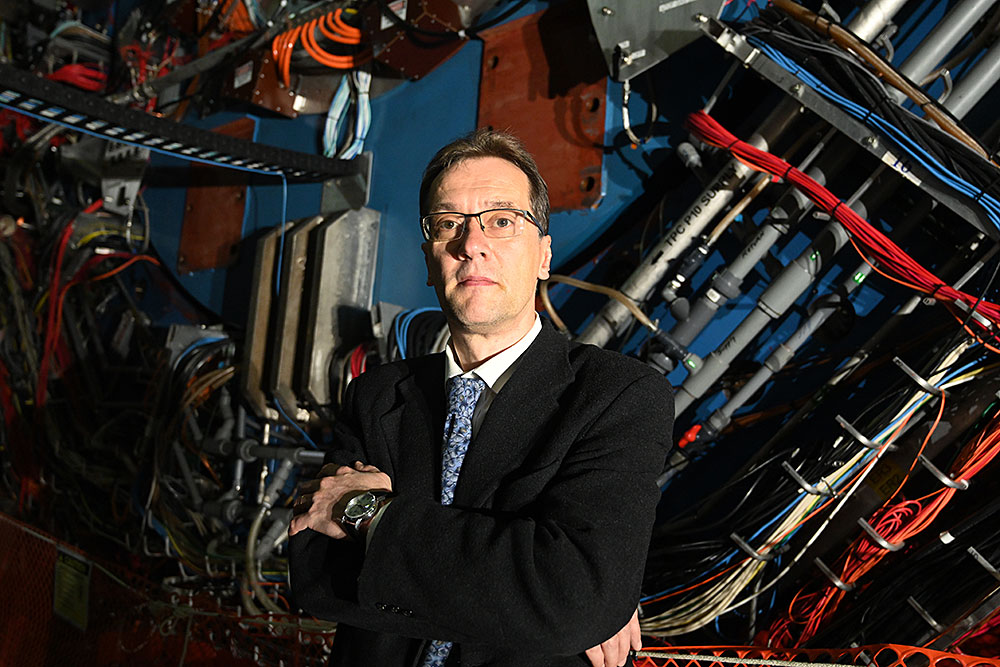
Calculation Shows Why Heavy Quarks Get Caught up in the Flow
Theorists have calculated how quickly a melted soup of quarks and gluons—the building blocks of protons and neutrons—transfers its momentum to heavy quarks. The calculation will help explain experimental results showing heavy quarks getting caught up in the flow of matter generated in heavy ion collisions.
Precision Nuclear Physics in Indium-115 Beta Decay Spectrum using Cryogenic Detectors
Nuclei such as Indium-115 (In-115) are extremely long lived, with half-lives of more than 100 billion years. These nuclei allow scientists to probe elusive high energy nuclear states. In a new study, scientists theoretically determined the electron energy spectrum from decays of In-115 based on data collected in a specialized detector. The scientists also performed the world’s most precise measurement of the half-life of In-115.
A Simple Solution for Nuclear Matter in Two Dimensions
Understanding the behavior of nuclear matter is extremely complicated, especially when working in three dimensions. Mathematical techniques from condensed matter physics that consider interactions in just one spatial dimension (plus time) greatly simplify the problem. Using this two-dimensional approach, scientists solved the complex equations that describe how low-energy excitations ripple through a system of dense nuclear matter such as exists at the center of neutron stars.

Resolving a Mathematical Puzzle in Quarks and Gluons in Nuclear Matter
Theoretical calculations involving the strong force are complex in part because of the large number of ways these calculations can be performed. These options include “gauge choices.” All gauge choices should produce the same result for the calculation of any quantity that can be measured in an experiment. However, it is difficult to obtain consistent results when using one particular choice, “axial gauge.” New research resolves this puzzle.
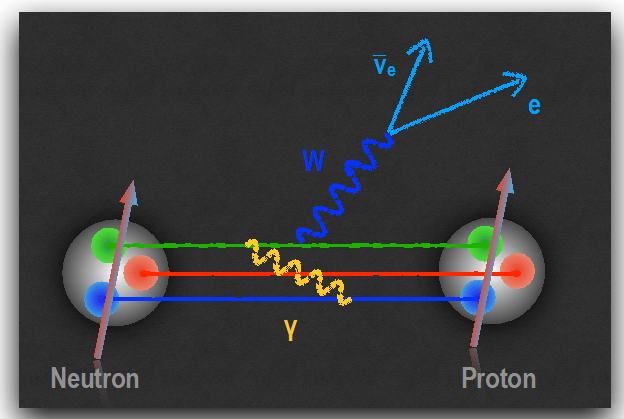
New Insights on the Interplay of Electromagnetism and the Weak Nuclear Force
Outside atomic nuclei, neutrons are unstable, disintegrating in about fifteen minutes due to the weak nuclear force to leave behind a proton, an electron, and an antineutrino. New research identified a shift in the strength with which a spinning neutron experiences the weak nuclear force, due to emission and absorption of photons and pions. The finding impacts high precision searches of new, beyond the Standard Model interactions in beta decay.
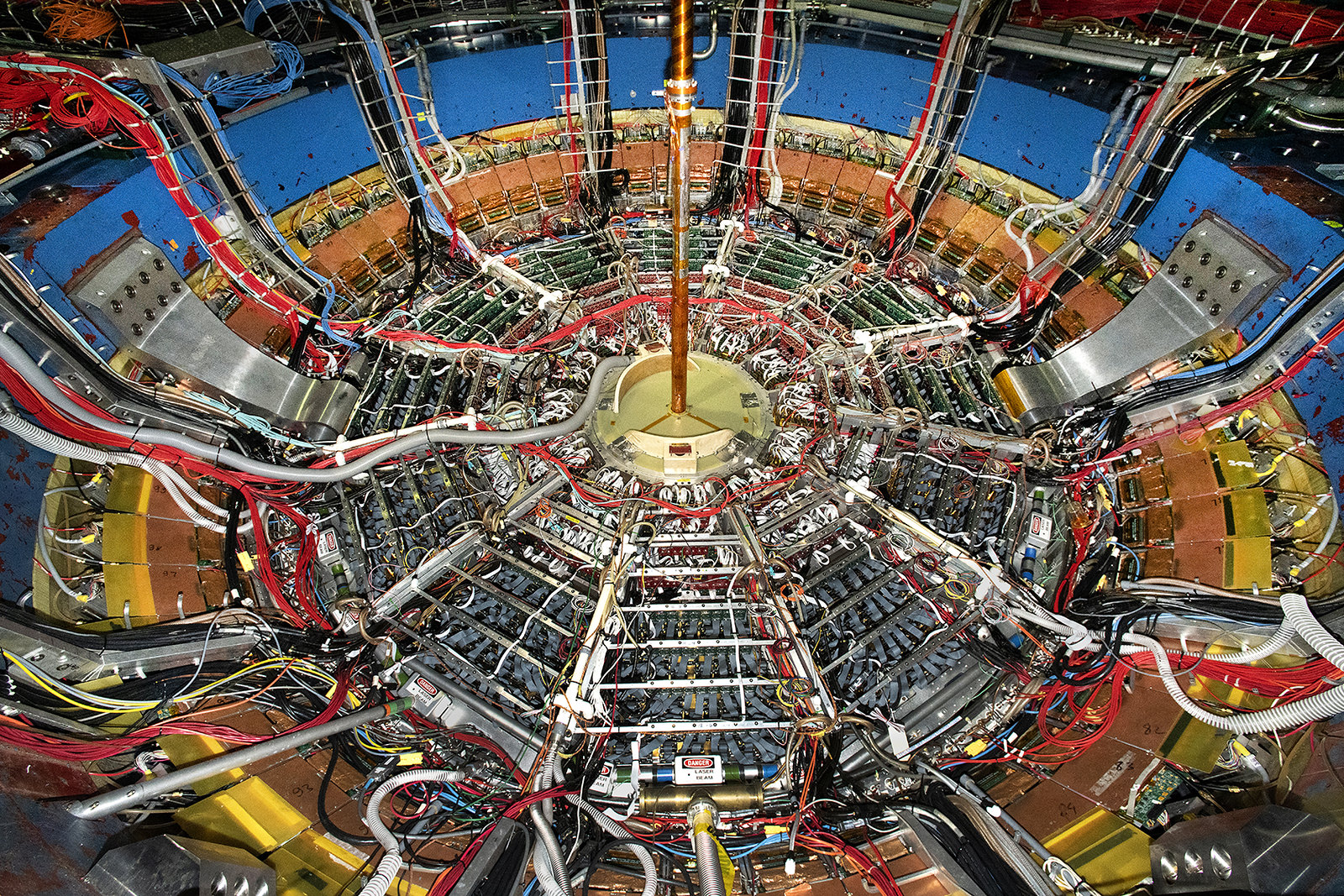
Subtle Signs of Fluctuations in Critical Point Search
Physicists analyzing data from gold ion smashups at the Relativistic Heavy Ion Collider (RHIC), a U.S. Department of Energy (DOE) Office of Science user facility for nuclear physics research at DOE’s Brookhaven National Laboratory, are searching for evidence that nails down a so-called critical point in the way nuclear matter changes from one phase to another.
Early career scientist wins prestigious Hungarian physics award
Laszlo Horvath, an early career physicist at PPPL, is the winner of the 2022 Károly Simonyi Memorial Plaque from the Hungarian Nuclear Society.
A Holographic View into Quantum Anomalies
Theorists calculated how the key ingredients of a phenomenon called the chiral magnetic effect should evolve over time in an expanding quark-gluon plasma. The theorists used the holographic principle to model the magnetic fields and other relevant characteristics needed for the effect. The results will help scientists interpret collision data and plan new searches for the chiral magnetic effect and the underlying quantum anomaly.
RHIC Gets Ready to Smash Gold Ions for Run 23
The start of this year’s physics run at the Relativistic Heavy Ion Collider (RHIC) also marks the start of a new era. For the first time since RHIC began operating at the U.S. Department of Energy’s Brookhaven National Laboratory in 2000, a brand new detector, known as sPHENIX, will track what happens when the nuclei of gold atoms smash into one another at nearly the speed of light. RHIC’s STAR detector, which has been running and evolving since 2000, will also see some firsts in Run 23.
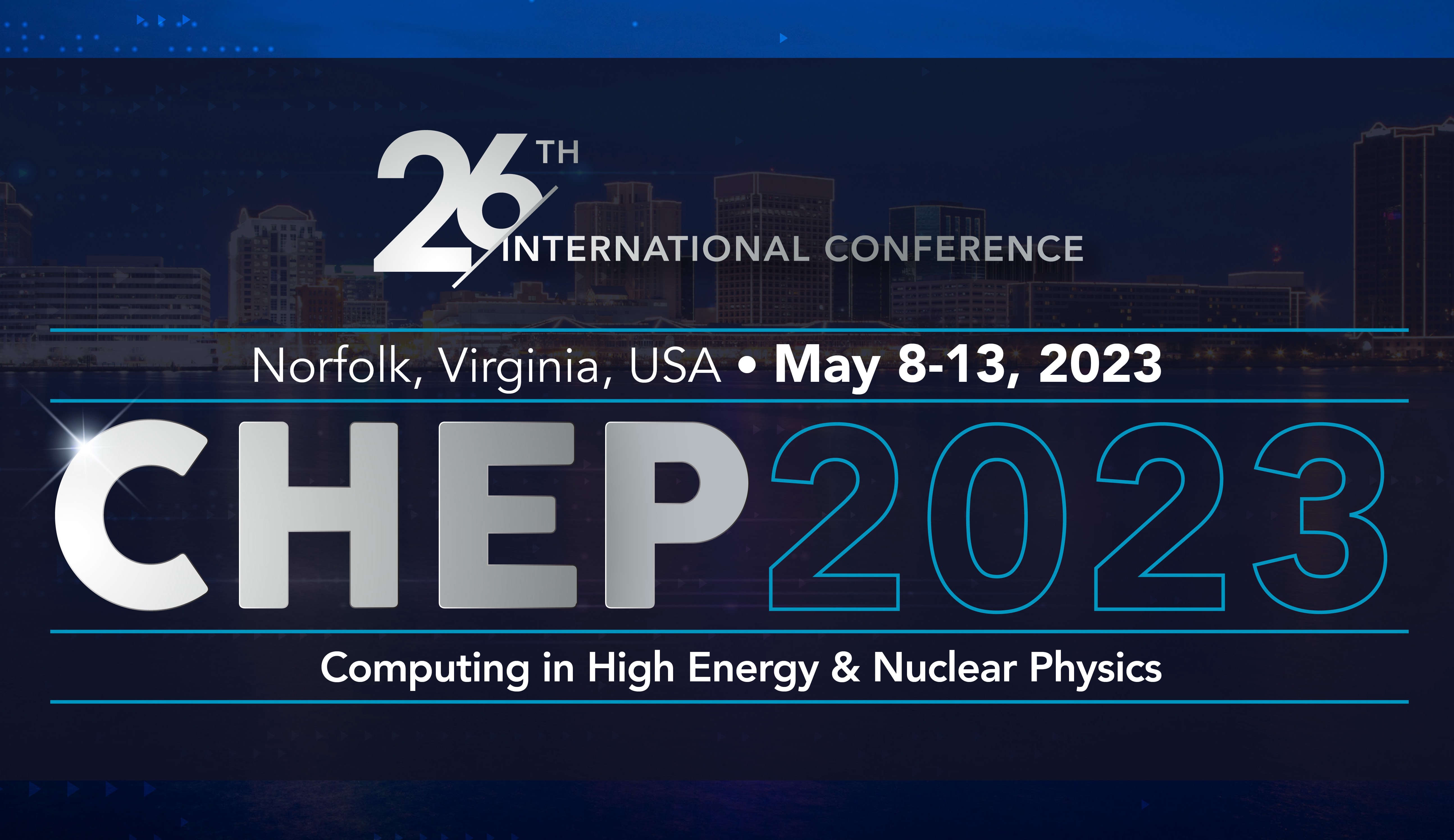
Jefferson Lab Hosts International Computing in High Energy and Nuclear Physics Conference
Experts in high-performance computing and data management are gathering in Norfolk next week for the 26th International Conference on Computing in High Energy and Nuclear Physics (CHEP2023). Held approximately every 18 months, this high-impact conference will be held at the Norfolk Marriott Waterside in Norfolk, Va., May 8-12. CHEP2023 is hosted by the U.S. Department of Energy’s Thomas Jefferson National Accelerator Facility in nearby Newport News, Va. This is the first in-person CHEP conference to be held since 2019.